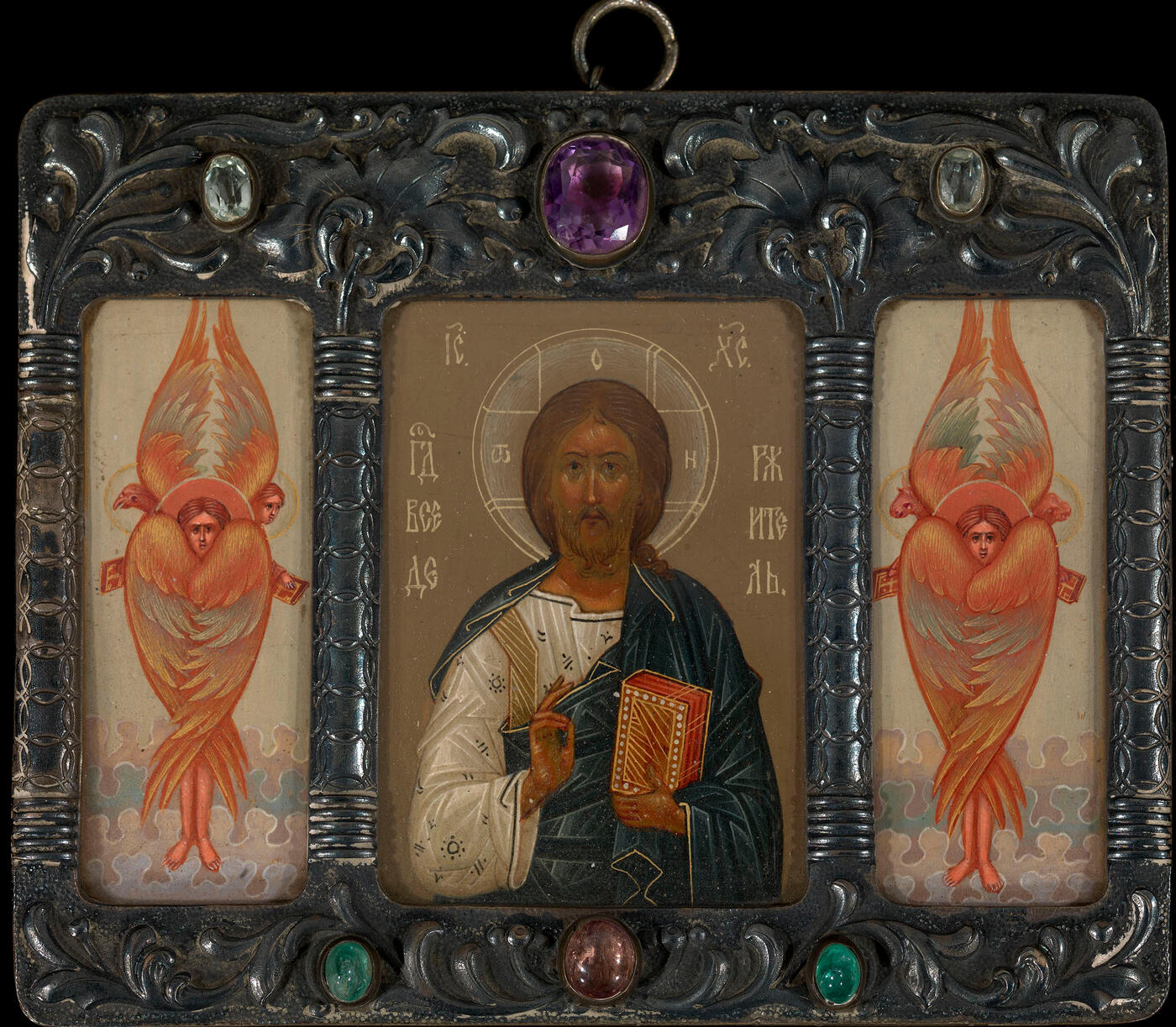MacDougall's Russian Art Auctions 1 December 2011
1 December 2011

511. AN UNUSUAL MINIATURE TRIPARTITE ICON WITH CHRIST PANTOCRATOR AND CHERUBIM IN A SILVER OKLAD SET WITH SEMIPRECIOUS STONES
OKLAD STAMPED WITH MAKER'S MARK OF KUZMA KONOV IN CYRILLIC, MOSCOW, 84 STANDARD
9.5 by 11.5 cm.
15,000-20,000 GBP
K.I. Konov crafted a number of stylish pieces after designs by S.I. Vashkov, and also used his techniques of contrasting surface textures, areas of colour, various precious and semiprecious cut stones and a deliberate asymmetry to achieve an unusual aesthetic impact, expressiveness and harmony. Vashkov, whose ideas found their practical expression through Konov, wrote in the journal Religious Art: “...the purpose of icons and church plate...is to nurture and develop man’s aesthetic sense, and therefore they should show conceptual commitment and be highly artistic.”
This kind of creative work is brilliantly exemplified by the fine Christ Pantocrator icon. On either side of the Pantocrator are Cherubim who, according to Dionysius the Areopagite, form the first triad of the Angelic Orders, together with the Seraphim and Thrones. The Cherubim are depicted according to Chapter 1 of the Book of Ezekiel, where they appeared with four wings (two raised and two covering the body), four arms and four faces — of a man, lion, ox and eagle. In early times, these “tetramorphic” Cherubim symbolised a single Gospel written by the four evangelists (in the Christian tradition, the aforementioned symbols were attributed to the four gospel-writers). Such imagery was replaced in late and post-Medieval cclesiastical art with cherubim and seraphim with four or six wings and human faces.
In terms of cultural history, this Art Nouveau artist’s interpretation is of great interest. Here, an old tradition is uniquely interwoven with a new one — the tetramorphic iconography is seen in the Cherubim’s two extra faces: the eagle and man on the left and the ox and lion on the right.
Despite the composition’s apparent simplicity, the icon is distinguished by its clarity and the depth of thought behind it. In Dionysius the Areopagite’s Celestial Hierarchy, the Cherubim’s attributes are described: “the name Cherubim denotes their power of knowing and beholding God, their receptivity to the highest light, their contemplation of the beneficence of the Godhead in Its first manifestation.”
Thus, this early 20th century image is a remarkable ecclesiastical artefact, in which new modes of artistic expression combine with the traditional symbolism and theology of the icon.
Notes on symbols:
* Indicates 5% Import Duty Charge applies.
Ω Indicates 20% Import Duty Charge applies.
§ Indicates Artist's Resale Right applies.
† Indicates Standard VAT scheme applies, and the rate of 20% VAT will be charged on both hammer price and premium.